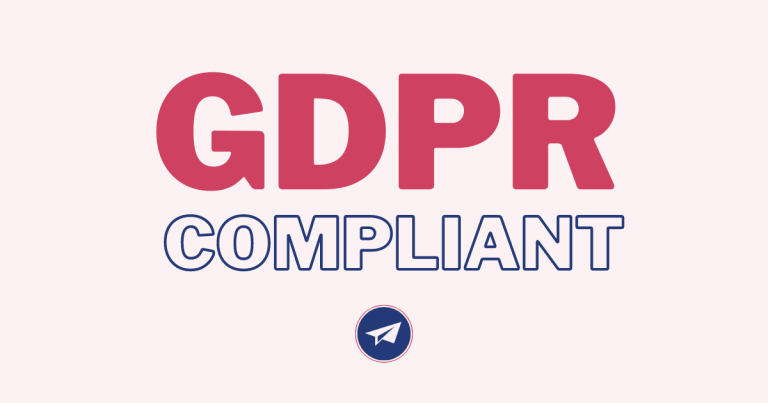Omnichannel support has become the gold standard for success in the customer service world. Luckily, in terms of technology it’s never been easier to go down the omnichannel path. For many businesses, however, grasping the benefits of an omnichannel strategy is not as straight forward, especially when weighing the required investment against the results it yields – which can be hard to quantify.
In this article, we’ll take a closer look at the benefits of omnichannel customer service, we’ll guide you through the steps you have to take to implement a competent omnichannel strategy, and, finally, we’ll discuss ways to measure the outcome of your efforts.
What Is Omnichannel Customer Service?
Omnichannel customer service is a support strategy that allows customers to receive service across multiple channels integrated in the same system. This approach allows for a comprehensive view over the customer’s interactions with the company thus, delivering a seamless experience.
Telephone, live messaging, chatbots, email, video calling, and SMS texting are all potential communication channels for offering support, and the omnichannel strategy aims to offer as many channels as possible.
Clients could start their journey by getting answers from your website with an AI chatbot. Later, they browse your knowledge base for information on your products before downloading your free app to their phone. They get live chat support within the app, before later emailing your company after having discussed the details with their boss.
You arrange a set of phone calls, and after they’ve purchased your products, members of their team send you follow-up questions on social media, by email, and by text.
This is an example of omnichannel customer service in action. Though customers will undoubtedly have their preferred modes of contact with your company, being able to offer them seamless service across multiple integrated channels is the power of the omnichannel superhero.
The power of the omnichannel superhero is the ability to offer seamless service across multiple integrated communication channels.
Omnichannel vs. Multichannel Customer Service
When evaluating omnichannel vs. multichannel customer service, omnichannel goes further than multichannel support to offer a completely unified experience for the client.
Multichannel communication is usually a company-first approach, where the company uses several channels to increase the chance that they’ll be able to get through to the customer with marketing and generate more leads.
When carried over to customer support without due care, this approach makes for a disjointed experience. Communication channels feel separate, with different messaging, and the customer often must repeat themselves.
Omnichannel communication should have the customer feeling that your business is always there to support them in the way they need. All your support channels should be connected and part of the same system.
If a customer comes into your store, phones your company, uses your mobile app, or talks to you via social media, they should feel that they’re dealing with the same entity every time.
Does Your Business Need an Omnichannel Customer Service Strategy?
An omnichannel approach to customer service has been shown to have tremendous benefits for customer retention and profits.
- Companies employing an omnichannel engagement strategy see average customer retention of 89% compared to the 33% a company with poor omnichannel support can expect.
- Two-thirds of people use multiple platforms to make purchases, with over 70% using numerous channels throughout the purchase journey.
- Omnichannel strategies drive an 80% higher rate of incremental store visits.
The data is startling. Omnichannel strategys’ effects on customer behavior and retention make this approach almost mandatory for any modern business.
Next, we’ll look at why omnichannel customer service is so successful.
Omnichannel strategys’ effects on customer behavior and retention make this approach almost mandatory for any modern business.
What Are the Benefits of Omnichannel Support?
Personalized Customer Service
Successful omnichannel support gives customers a personalized service experience which makes them feel prioritized, valued, and more emotionally connected to a company that shows it recognizes them as an individual.
For instance, being able to talk to the same agent each time they call is something that over 35% of customers have stated is important to them. Being required to restate their queries each time they contact your company leaves a customer feeling that you don’t value their time.
Offering these types of personalized service is essential to standing out from the competition. It’s an effective strategy for small businesses as they can show customers why their more personalized approach can be a benefit. And it’s just as vital for larger companies that risk feeling impersonal because of the size of their client base.
Reduced Operational Costs
For many companies, omnichannel sounds like one of those things they’d love to offer if only they could afford it. But this approach, when implemented correctly, can be one of the most effective strategies to reduce customer service costs.
Most of the customer service channels you will want to add in an omnichannel approach are cheaper to handle than a phone call. Offering support via SMS is around four times cheaper than support over the phone. Email support is even less expensive to run, and social media costs next to nothing when you have the right procedures in place.
This all means that on a per-support-request basis, using an omnichannel approach can decimate operational costs.
Lower Volume of Inbound Contact Requests
Besides resulting in fewer support requests over the phone, an omnichannel strategy can reduce the number of contact requests you receive in total.
Making support information on your products and services publicly available online allows customers to take a proactive approach, finding answers to their support queries on your knowledge bases, FAQs, social media, or community forums.
This not only reduces the number of inbound requests you receive; it also offers customers a better experience as many prefer to solve quick issues themselves.
Improved Customer Satisfaction
Omnichannel support allows customers to use the communication channels they prefer, instantly increasing their satisfaction with your service.
But it’s more than that. Your agents can have complete visibility of all the touchpoints the customer has had with your company. They can use this to improve first contact resolution rates, build customer trust, and avoid customers having to repeat themselves.
Agents love having this information available to them. Giving them the real-time information they need to offer excellent support can be a powerful motivator, increase agent engagement, and reduce attrition.
Reduced Customer Churn Rates
The omnichannel approach has massive advantages for customers, particularly in the way the right information is always available to them at the right time.
If you design it effectively by proactively considering when, where, and how clients will require further information on your products and services, you can make the entire journey for them faster and effortless.
Customers are simply more likely to stick around with a company when they know they can get support through the channels they prefer. Moreover, the service they receive is unified, strengthening your company’s brand and building loyalty.
Increased Sales Revenue
The omnichannel strategy can increase the sales revenue you receive from upselling and cross-selling. Preemptive texts and emails can “warm up” customers, so they’re more likely to pick up when you call. This speeds up resolutions, improves satisfaction, and results in more sales.
Omnichannel means there’s less of a distinction between sales and support because the customer gets the same level and style of attention each time. This can result in better levels of upselling and cross-selling.
Omnichannel support can, ultimately, lead to better customer experiences, particularly for long-term customers which means reduced customer churn rates and higher sales per customer.
How to Deliver Successful Omnichannel Customer Service
Know Your Customers
Every business has a separate set of customers, and each of your products has its own subset of clients. Each of these types of customers has its preferred way of doing business. They all have their own expectations of the service you will provide, and it’s up to you to surpass these expectations at every turn.
There’s no point in pouring massive resources into a communication channel that your set of customers won’t use. Some businesses operate almost completely via phone calls and in-person meetings, so the advantages of adding support via Facebook, for instance, will be minimal in the short term.
Focus your resources on the channels your customers are most likely to use first.
When you use an omnichannel support solution that makes it easy to add these additional channels into the mix, the expense will be very low and things can be set up quickly. It can, also, be worth offering customer service through less traditional methods for your industry even if it doesn’t get used much.
Appearances matter (to some people, anyway). Clients may consider your company more forward-thinking and flexible, for example, if you offer support through channels they might not personally want to use.
Create a Customer Journey Map
Map the journey your sets of customers use now. By checking the history of their conversations, you can see whether they’ve interacted mostly via your website, through texts, or through social media, for instance. Use these insights to gauge where your efforts will be best spent when expanding the channels you offer support through.
With the right software in place, you can get customer feedback and sentiment analysis at every step of the journey. This allows you to find the problem areas in your customer journey, which you can use as a guide to understanding where you need to improve.
Leverage Technology
All of this is impossible without the right data collection. Customer data, sentiment tracking, and performance monitoring must be central to your omnichannel strategy so you have precise metrics telling you what’s working and what isn’t.
Customer service technology with machine learning and AI can automate a lot of the work involved in tracking customer behavior. It can build you a report that demonstrates how each of the cogs in the system is performing—vital information for ongoing improvements.
Omnichannel Contact Center Solutions
Automation & AI
Smart AI and automatio can blur the lines between self-service and human service. Chatbots using natural language processing can perform the basic duties of taking customer data, routing users to the correct documentation, and gathering details of a problem before it’s sent to a live agent.
Chatbots offer another channel for support, and if they’re integrated well into your support infrastructure, they can be another pillar in your omnichannel strategy.
Customer Data Analytics
With said automation and AI in place, you now have an excellent way to gather customer data analytics. With every step of the customer service process being monitored and tracked, you can get incredible insights into customer behavior and which parts of your customer service journey need tweaking.
You can find which customer service channels to focus on, the sentiments customers have at different parts of the journey, and how engaged they are at each point. With machine learning, the system can test which responses have the best success rates, so service can be continually improved based on hard data.
Connect Key Business Software with Your Omnichannel Support Platform
Effective omnichannel customer service hinges on all your systems working together in unison. You may be able to offer multichannel support by using multiple separate systems, but you can’t offer a high level of service when any of your main interaction channels operate in a vacuum.
Integrated customer relationship management, communication, and collaboration tools are the backbone of omnichannel support. Evaluate all the tools you’re using, check which are operating separately, and replace them with a tool that is integrated with all your other software.
Create a Seamless Channel Integration
For a truly omnichannel system as opposed to simply a multichannel solution, you need all your support channels to be integrated. Customers expect a seamless transition from one channel to another. If they first contact you via social media but decide to reach out to your call center as a situation escalates, for instance, offer them an experience that suggests the same entity is handling the transaction all the way.
To facilitate this, you need customer data to be updated in real-time. As customers switch support channels, the same information is relayed to whoever is handling the query at that point.
Whenever possible, allow the same agent to provide service to the customer as they move across channels. If this isn’t possible, the agent taking over support must have immediate access to all the customer information and details of all the support they’ve received in the past.
This type of seamless channel integration is only possible when you use contact center software that’s designed with omnichannel support in mind. Using a single software solution eliminates double work and eradicates data silos.
Train & Upskill Your Customer Service Team
While we often look to technology to improve customer service, we shouldn’t forget that the team remains the heart and soul of the customer support experience.
Agents that understand more of the cogs of the system are better equipped to show empathy. If they know the typical customer journey, they can offer a better customer experience.
Cross-training agents in offering support via multiple channels can pay off in dividends when you take an omnichannel approach. Your customer care representatives will
- Be able to handle more support channels, reducing downtime
- Be more likely to be able to deal with a customer personally, all the way through their service journey
- Feel better valued and important, improving agent motivation
- Feel better supported and that there’s room to grow in the company
Upskilling agents by giving them more product and communication skill training improves the support you can offer. It also increases first-call resolution rates, as your highly skilled agents better know how to resolve issues the first time around.
Offer Self-Service Options
Self-service options for customer support are a win-win for companies and customers alike. Many customers prefer to resolve minor issues with products and services themselves. Perhaps they just need some minor details on how a product works or want to make a slight change to their plan. By offering self-service options, you’re broadening the ways customers can choose to perform these actions.
Some customer support self-service options to consider include:
- Automated call center
- Chatbots
- Community forums
- Knowledge bases
- FAQ pages
- Mobile apps
When customers choose a self-service option instead of a support channel that requires human interaction, this results in lower operating costs for your company.
Engage With Customers Through Social Media
Customers spend 20-40% more with companies that respond to queries over social media. That alone illustrates the value of social media to businesses.
Companies have long known the importance of social media to marketing, but many see it as separate from the rest of the business. An omnichannel approach brings social media in as a new channel for offering customer service support.
Beyond all the usual advantages of offering even more channels, responding to queries via social media shows publicly how dedicated your company is to delivering superior support. It offers another place for people to find previous answers to queries, too, lowering the number of inbound requests you’ll receive.
And you can leverage the massive resources of social media companies to deliver videos, guides, and responses, too.
Measure Support Performance
Measuring how each leg of your customer service infrastructure performs while you are making improvements to your customer support is how you can track what’s working and what isn’t.
A contact center is full of key performance indicators (KPIs) that give you a bird’s-eye view of how a particular person, team, support step, or system is performing. With omnichannel customer service, there are certain KPIs that can be particularly useful:
- Number of touchpoints—How many touchpoints a customer needed to go through for the company to reach a particular goal.
- Retention rate—Customer retention is a useful high-level gauge of how your company’s aftersales care is performing.
- Net Promoter Score (NPS)—How likely a customer will be to recommend you to friends or family. Average NPS compared across different customer journey steps or support channels can be a pointer to where you should focus.
- Traffic generation and visit rate—The amount of traffic you receive on particular channels will show you their relevance to your customers and how aware customers are that such support channels are available.
- Cross-channel conversion rate—How well conversions are performing when customers use multiple channels.
- Lifetime customer value (LTV)—The total revenue you get from a customer in his “lifetime”.
Each of these KPIs and more can be used to compare each step of the process. Automation and AI can generate these insights for you, highlighting where improvements can be made.
Analyze Customer Feedback Data
AI and automation provide useful insights into the customer journey by storing data on customer behavior and using them to gauge customer sentiment. Again, this can be automated, so the cost to the company is minimal.
Pooling customer feedback data together with data automatically gathered on customer behavior, customer engagement, support interactions, first contact resolution rates, customer demographics, and the quality of your customer care is how you’re able to see how to improve your customer-centric strategy.
New technology makes this process so much easier, so you can be miles ahead of the competition if you use AI reporting tools with machine learning.
Conclusion
Omnichannel customer service is more than just having multiple modes of communication available between your company and its clients. It’s about offering the same quality and style of service over all your channels, so customers feel confident they’ll get the same level of support no matter how they choose to contact your company.
The Omnichannel strategy can reduce operational costs and lower the number of inbound contact requests you receive. It results in more personalized service, improving customer satisfaction rates, reducing customer churn, and ultimately increasing sales revenue.
Putting an omnichannel strategy into place starts with evaluating your current customer journeys. You can then leverage technology in the contact center to offer seamless support across all channels. By integrating key business software, training your customer service team, adding self-service and social media support, and using advanced automation and machine learning, your customer service can run smoother than it ever has.
Finally, perform ongoing support performance measurement and analyze the data you get from customer feedback, allowing you to recognize how your omnichannel system should evolve to reach even greater heights.
Did you like the post?
You might also like:

Surveypal
Everything you need to lead and improve your customer experience. Learn more at surveypal.com, or







